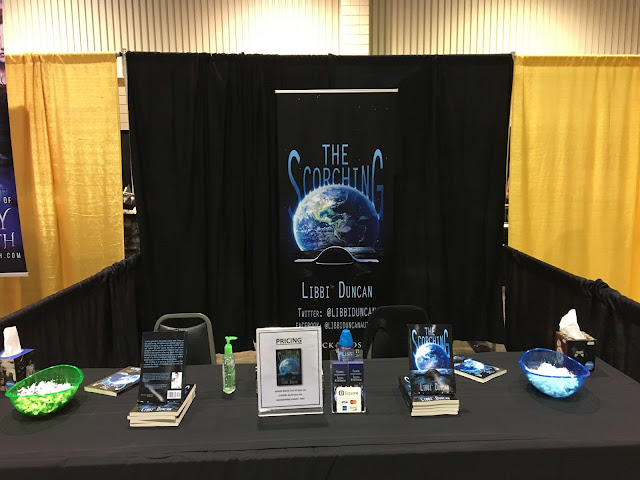Word Clouds
 |
| A beautiful word cloud for my novel, The Scorching. |
Word clouds are amazing, and their applications are endless. They can be just for fun, but they can also be used to analyze trends in a text or series of texts. They work by counting how frequently a word is used and changing the size based on prominence. Most word clouds exclude common words like: the, it, but, and, he, she, they, said, etc. The biggest words are the ones used the most, and the size goes down relative to the frequency of use. I love seeing word clouds for novels; in fact, that's where I first got the idea to make one. I saw a word cloud for Harry Potter and thought it was the coolest thing ever, so I had to try it for myself. You can make one by hand using good ole' Microsoft Paint... or Photoshop, if you're a wizard. If you're lazy like me, you can also use a word cloud generator, like this one. I used it to make mine, although I did use Paint to add a couple words that I wanted to see.
Here's how to use the generator and make a fantastic word cloud:
- Find a website with a good generator. I had a great experience with Wordle.net (linked above), but there are tons more to choose from.
- Go to the generator/create page of the website.
- Simply copy/paste the body of text you want to use. Microsoft Word has a "Select All" option on the far right of the toolbar. I highly recommend using that (or the equivalent) for larger pieces. Once it's all pasted, just press "Go/Create"
- With Wordle, there are editing tools on the top left of the word cloud. You can change quite a few things, so your word cloud will be truly unique!
- Color. You can use their pre-generated backgrounds/palettes, or create your own. I made mine and I love how it turned out. You can refresh the colors to change the colors for each word.
- Font. Wordle has a nice variety of fonts to choose from that can give your cloud a lot of emotion, help with clarity, and give it a nice theme.
- Layout. You can choose either straight or round for the overall shape, as well as how the words are aligned (random, vertical, horizontal, and varying mixtures) I chose a straight layout with a "Mostly Horizontal" alignment. You can refresh this option to play around with how the words are oriented.
- Maximum words included. This just determines how many words will show up in the cloud. My cloud has about 150.
- Whether to exclude common words or not. I recommend using this option, because otherwise the biggest words will be boring.
- Save, print, or continue customizing.
- I decided to add a few words that were missing, but relevant to the overall theme of my book. Here's how I did it:
- Open the file in MS Paint.
- Select a font that matches the word cloud as closely as possible.
- Use the "eyedropper" tool to match the colors, and try to vary the color you use.
- Insert the word in an empty space, and try to vary the size of the words you add to make it less obvious.
- If you want to upload the photo, you'll probably have to change the file type (I did). Since I opened the file in MS Paint, it was simple to "Save As" and choose .png instead of the old file type. This allowed me to upload it here with no problems!
- Reflect on the word cloud and share it!
I hope you enjoy my novel's word cloud and that you'll have fun making one for your favorite book, essay, article, interview, poem, or whatever else you're interested in. For me, this was a great exercise. It also has me wondering why some of the words are as big as they are, 'like,' 'back,' and 'just' come to mind. I may do a search through my manuscript and find out if they were the best choice for each time I (over)used them.
Thanks for reading!
-Libbi Duncan, The Cornucopia Woman


Comments
Post a Comment